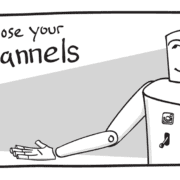Marketing Laser Cataract Surgery in Your Practice
When marketing femtosecond laser technology in conjunction with cataract surgery, it is helpful to reference past marketing principles that have proved effective in multiple industries. We look back to the 1980s when “the four Ps of marketing” ruled how one brings any product or service to the market. The four Ps — which stand for product, pricing, promotion, and placement — are a helpful way to look at this very complicated category.
What the Four Ps Represent
A product satisfies the consumer’s needs or wants. It is a tangible item or an intangible service. Every product follows a life cycle, and marketers must be aware of the life cycle of each product they are marketing. Attention must be given to the challenges that will arise as the product moves through the cycle (growth, maturity, and eventual decline). The product’s appearance, function, and method of support all contribute to the item or service that the customer actually purchases. The product bundle should meet the needs of the target market. Therefore, research is a key component of building an effective product that appeals to customers, or in this case, refractive cataract surgery patients, and avoids costly mistakes.
The price is the amount a customer pays for the product. Price determines a company’s profits. Marketers should be aware of how the product fits within its competitors as well as how the consumer perceives the overall value of the product. The pricing approach should reflect the appropriate placement of the product in the market. Price is the one “P” that generates revenue while the others incur costs. Effective pricing is important to success.
“Price is the one ‘P’ that generates revenue while the others incur costs. Effective pricing is important to success.”
Product promotion is any element that a marketer uses to dispense information about the product. This includes advertising, sales promotions, public relations packets, and word of mouth. The purpose of promotion is to bring people to an understanding of what the product is, what they can use it for, and why they want it. Customers need to know that the product will satisfy their needs, which in this case would be a final refractive outcome that maximizes accuracy and minimizes risk.
Place refers to guaranteeing that the product is located somewhere that consumers can conveniently access it. What the product is will greatly determine how it is distributed. Marketers must make sure that product distribution happens in such a way that it can be easily purchased by its target audience. If the product is sold to vendors, then they should also contribute to the overall view of how the final exchange of the product with the consumer should occur.
Let us look at how the four Ps relate specifically to the marketing of laser technology in cataract surgery.
Pricing
How exactly the surgical practice is going to charge for the advanced technology used in laser cataract surgery is an important step, perhaps the most important one, in discovering how the center might find success. Much angst has been spilled related to the ins and outs of proper pricing. Pricing is not only a cue for quality but also for the correct or incorrect pathway as to how to bill for laser-related services. Some practices use this advanced technology, albeit elective, to “clean house” on all of their refractive, non-covered, or elective services. A good rule of thumb here is that whatever the center might be charging electively for the offering should be similar to what it charges for a similar offering across the hall. Another way to say it is that the pricing needs to make sense and be justifiable.
Placement
Where the practice manager and/or surgeon decide to place the device is a critical component in how it is marketed. The way one communicates and thus markets to prospective patients changes based on if the practice remains an office-based procedural center and thus patients are transported after the laser treatment to the surgery center or if the center co-locates the device next to the surgery center. Much time, energy, and planning must be spent to determine the correct choreography for the placement of this new technology. Placement affects the other three Ps.
Product
What else might be included in a bundled package alongside the laser technology? This is an important question to consider when looking at implementing this new technology. Many surgeons agree that this laser technology works best when combined with other innovations that optimize the cataract surgical procedure. Those other technologies may include the use of wavefront aberrometry pre- and post-operatively, wavefront aberrometry for documentation of the implant’s power intra-operatively, or topography. These and many other non-covered services may be considered as part of the total elective or non-covered package. Practices may decide to rename the package related to its non-covered services.
Promotion
Promotion is an important consideration when thinking of laser cataract technology, however, it should always be handled last. Excellence in promotion cannot be achieved until there is excellence in execution. This statement has never been as true as it is in regard to this very complicated surgical space. When the technique is finally ready to be promoted, the best first step is to create demand by going first to the practice’s patient base and core of referring doctors. Newsletters, webinars, symposiums, live surgeries, and mailers are all effective ways to achieve this.
Conclusion
By following these basic structural elements, the center will be able to create a profitable laser cataract surgery program that satisfies customers’ needs while continuing to propel the business forward. Although the four Ps inform the way the current practice is shaped for marketing laser technology, they are not the end of the road. Once the right product at the right price is attained and offered in the right place and promoted in the right way, the practice must continue to stay on top of market changes and adapt as necessary. An experience for patients must be created that is as premium to patients’ care as laser technology is to refractive cataract surgery’s accuracy. Technology continues to move surgical procedures toward more precise and predictable outcomes. The femtosecond laser is just one example of the creative ways in which laser technology continues to help patients. Marketing and innovative technologies are part of the business venture that never ends.
This article originally appeared in Cataract & Refractive Surgery Today. Click here to download a PDF version.
Matt Jensen, MBA, is Founder and Principal of Matt Jensen Marketing, CEO of Vance Thompson Vision, and a certified Experience Economy Expert.






